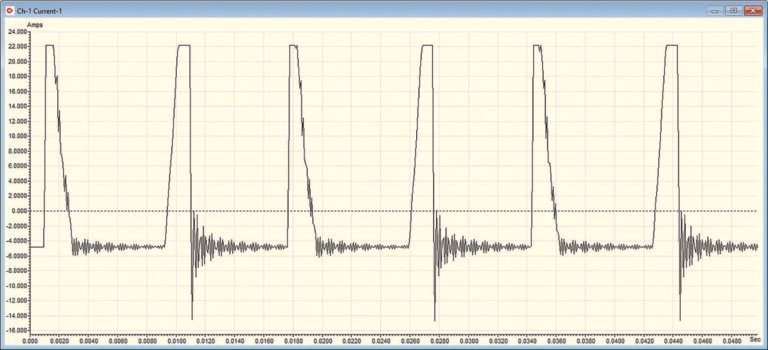The Difference Between Active and Passive Harmonic Filters
Active vs Passive Harmonic Filters
Harmonics in your facility’s electrical system can cause increased energy waste, transformer and system overheating, and significantly decrease equipment reliability and lifespan.
Harmonics filters are a great addition to energy efficiency programs - providing an effective power quality mitigation solution - but there is a significant difference between active vs passive harmonic filters. First, let’s take a closer look at harmonics in electrical systems.

Problem: Harmonics
Harmonics are deviations from the ideal 60 Hertz phase in an electrical system. A perfect 60 Hz sinusoidal wave has no harmonic content, but in reality, electrical systems often experience distortions on both the power and non-power side.
These distortions, known as Total Harmonic Distortion (THD), are not just abstract concepts. They manifest in significant power losses and equipment stress, particularly affecting resistive elements, transformer cores, and other power quality mitigation technology in your systems.
Power Harmonics vs Neutral and Ground Harmonics
-
Power Harmonics
Power harmonics, primarily resulting from nonlinear electronic loads in commercial and industrial power systems, create various issues, including increased power losses and potential equipment damage. These harmonics are typically integer multiples of the fundamental power frequency and manifest as voltage and current distortions in the power system.
A key aspect of power harmonics is resistive losses, often expressed as I2R losses, where I is the harmonic current and R is the conductor's resistance. This type of loss increases significantly with the squared influence of harmonic currents on power loss.
-
Neutral and Ground Harmonics
Neutral and ground harmonics relate specifically to the neutral and ground components of electrical systems. These harmonics depend on phase balance and harmonic currents, with a focus on triplen harmonics (multiples of the third harmonic), which are often present in neutral and ground systems.
Unlike power harmonics, neutral and ground harmonics can lead to additional complications, such as the skin effect. This effect, more pronounced for harmonic currents with frequencies higher than the fundamental frequency, increases the effective resistance of conductors and results in additional I2R losses.
These harmonics can also negatively impact system reliability, increasing the risk of outages, reducing power quality, and leading to higher maintenance costs.
Addressing Neutral and Ground Harmonics
The presence of non-linear loads in modern industrial and commercial power systems introduces harmonic currents into neutral and ground systems. As explored above, these neutral and ground harmonics significantly elevate power losses, increase overheating in the transformer, and adversely impact system operation and the longevity of equipment.
Since the 1990's, the energy community has attributed minimal power losses to neutral and ground harmonics, but in modern facilities, the negative impact is much more pronounced. For instance, most energy managers and electrical engineers are aware of harmonic currents amplifying Resistive (I2R) losses, but a recent peer-reviewed article in the NETA World Journal highlights additional power losses from neutral and ground harmonics.
Power Losses Due to
Neutral and Ground Harmonics
The NETA World Journal recently published a peer-reviewed technical article written by Dr. Howard Penrose of MotorDoc LLC. The article and its supporting data was audited by a committee of energy professionals and outlines power losses due to neutral and ground harmonics in a facility.
Key Findings:
Non-linear loads increasingly introduce harmonic currents into neutral and ground systems
Harmonic conditions result in increased power losses and greenhouse gas emissions
Power losses from neutral and ground harmonics include Resistive (I2R), Transformer and Core, Skin Effect, and Dielectric Losses
The losses associated with neutral and ground current can also impact system reliability
Harmful Effects of Neutral and Ground Harmonics
-
Harmonics exacerbate I2R losses and transformer core losses, increasing the temperature of of neutral conductors and distribution transformers, which can lead to premature failure and more frequent maintenance requests.
-
Continuous stress from harmonic currents, including skin effect losses and transformer hysteresis, can cause frequent breakdowns and shorten the operational life of electrical equipment.
-
Harmonic-induced resonance and power factor correction capacitor inefficiencies often result in more equipment failures, necessitating additional maintenance and increased operational downtime.
-
Inefficiencies due to harmonics lead to higher energy consumption, resulting in elevated energy bills and possible penalties from the electric utility.
-
The energy waste caused by neutral and ground harmonics translates to CO2 equivalent (CO2e) increasing a facility’s carbon footprint.
Typical Passive Harmonic Filters
Passive harmonics filters typically include reactive components like inductors, capacitors, and resistors. Typical passive harmonic filters are commonly installed in series on the power system to a bus bar, main switchboard, switchgear, or inside a motor control center (MCC) in order to filter harmonic content.
These types of passive harmonic filters have a disadvantage because they can be affected by the external harmonics on the mains, leading to potential overheating in the electrical system. Also, sizing typical passive harmonic filters is difficult because the effect of the external harmonics is not easily identified, so there is no “one size fits all” device.
The Onics Passive Harmonic Filter
Because the Onics Passive Harmonic Filter is a passive and inductive device, it does not require 3rd-party electrical components to operate and requires no maintenance or retrofit.
The Onics Passive Harmonic Filter is not a power factor correction device. As a low pass harmonic filter, the device is set to filter harmonic waveforms at the primary frequency of 60 Hertz. The Onics device mitigates harmonic waveforms above the primary frequency (i.e. 3rd, 5th, 7th harmonics) in neutral and ground (or the non-power side) of the facility’s electrical distribution system.
Hard wired in parallel on the cold side of neutral and ground applications, there is no risk of a service interruption if the device is damaged or disconnected.
Onics Energy Solutions guarantees a minimum five percent (5%) kWh reduction after installing the Onics Passive Harmonic Filter. Most facilities experience verified energy savings of ten percent (10%) or more depending on facility profile and load configurations. All energy savings are validated by a third-party Measurement & Verification (M&V) Energy Expert based upon interval metering data from the electric utility.
Conversely, the Onics Passive Neutral and Ground Harmonic Filter is a passive, inductive low pass shunt harmonic trap installed in parallel on every neutral and ground application in a facility including:
Variable Frequency Drives (VFDs)
Programmable Logic Controllers (PLCs)
Motor Control Centers (MCCs)
Uninterruptible Power Supplies (UPSs)
Standard Power and Lighting Panels
Active Harmonic Filters
Active harmonic filters, also referred to as harmonic correction units (HCUs), represent a sophisticated and effective solution for managing power system distortions. Designed to be installed in parallel with the electrical distribution system, active harmonic filters interact directly with the power flow. This placement is strategic and vital to the functionality of these units.
Active harmonic filters operate similarly to noise cancellation systems in audio technology. They "listen" to the power line, detecting the harmonic distortions that deviate from the ideal sinusoidal waveform. Once these distortions are identified, the active harmonic filter generates a counteracting waveform that is equal in magnitude but opposite in phase to the distortion. This counteracting waveform is then injected back into the power system. The process is akin to introducing antidotes to negate the effect of toxins. When the active harmonic filter is switched on, it continuously monitors and counteracts the harmonic content, effectively "canceling out" the distortion and improving the power quality.
This method of dynamic cancellation is what sets active harmonic filters apart. Unlike typical passive filters, which are tuned to specific frequencies and can sometimes be affected by changes in the power system, active filters are adaptive. They can respond to a wide range of harmonic frequencies, making them a versatile solution for various power system configurations.
However, this high level of sophistication and adaptability comes at a price. Active harmonic filters are generally more expensive than passive harmonic filters. They require a significant capital expenditure (CapEx) investment, which can be a significant consideration for many businesses faced with a multitude of energy efficiency initiatives.
The installation process for active harmonic filters can be complex and requires expert knowledge to ensure optimal performance and safety. It involves careful planning, including an analysis of the existing power system, identifying the right location for installation, and configuring the filter to work effectively within the system's parameters.
In addition, active harmonic filters have a higher operating cost due to the need for ongoing monitoring and maintenance. Regular checks and adjustments may be needed to ensure the filter continues to function optimally as the power system's conditions change over time.
Facilities looking to maximize their energy efficiency programs can explore a combination of power harmonic filters and the Onics Passive Neutral and Ground Harmonic Filter to ensure they address harmonic distortion on the power and non-power side of the system.
Which Type of Harmonic Filter Does My Facility Need?
Depending on your facility profile and load configurations, you may need passive harmonic filters, active harmonic filters, or a combination of the two.
For instance, Onics Energy Solutions is installing the Onics Passive Harmonic Filter in a wastewater treatment facility that also requires active harmonic filters to manage harmonic content on the power side. Since the Onics device focuses on mitigating harmonic content in neutrals and grounds, it complements the power quality mitigation provided by an active harmonic filter.
To learn if the Onics Passive Harmonic Filter is right for your facility, please take a moment to fill out our facility intake form.





